From Rainfall to Recharge
From Rainfall to Recharge
Published on :- March 26th, 2024
On March 22nd, we commemorate World Water Day, a reminder of the critical importance of water in our lives. The theme for 2024, 'Water for Peace,' underscores the indispensable role water plays in fostering global stability and prosperity. When water becomes scarce or contaminated or access to it is unequal or nonexistent, tensions can escalate among communities.
Despite accounting for only about 2.45% of the world's surface area and being home to ~18% of the world's population, India possesses only 4% of the world's freshwater resources. This places India among the most water-stressed nations globally. India's reliance on an increasingly erratic monsoon for its water needs is further exacerbated by the effects of climate change.
Surface water and groundwater resources constitute the backbone of India's water supply. In this edition of the data dialogue, we delve into different types of water resources and their utilisation.
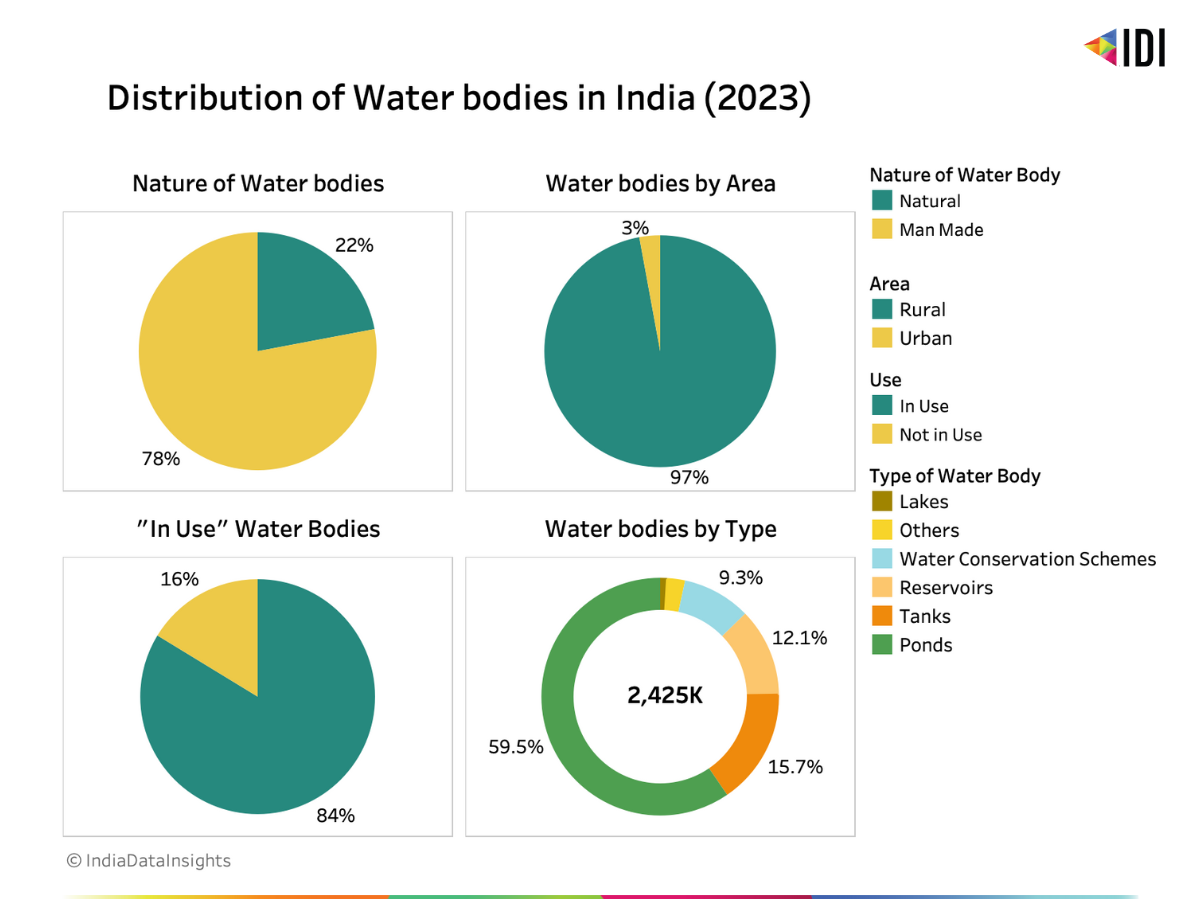
According to the Inaugural Census for Water Bodies report in 2023, India possesses approximately 2425K water bodies, with 97.1% in rural areas and 2.9% in urban areas. Among these, only 22% of water bodies are classified as natural. The majority - approximately 87% - are ponds, tanks, and reservoirs. Further, among these, 84% (2030K) are actively utilised, while the remaining 16% (394K) are not used due to factors such as drying up, construction, siltation, irreparable damage, salinity, and other causes.
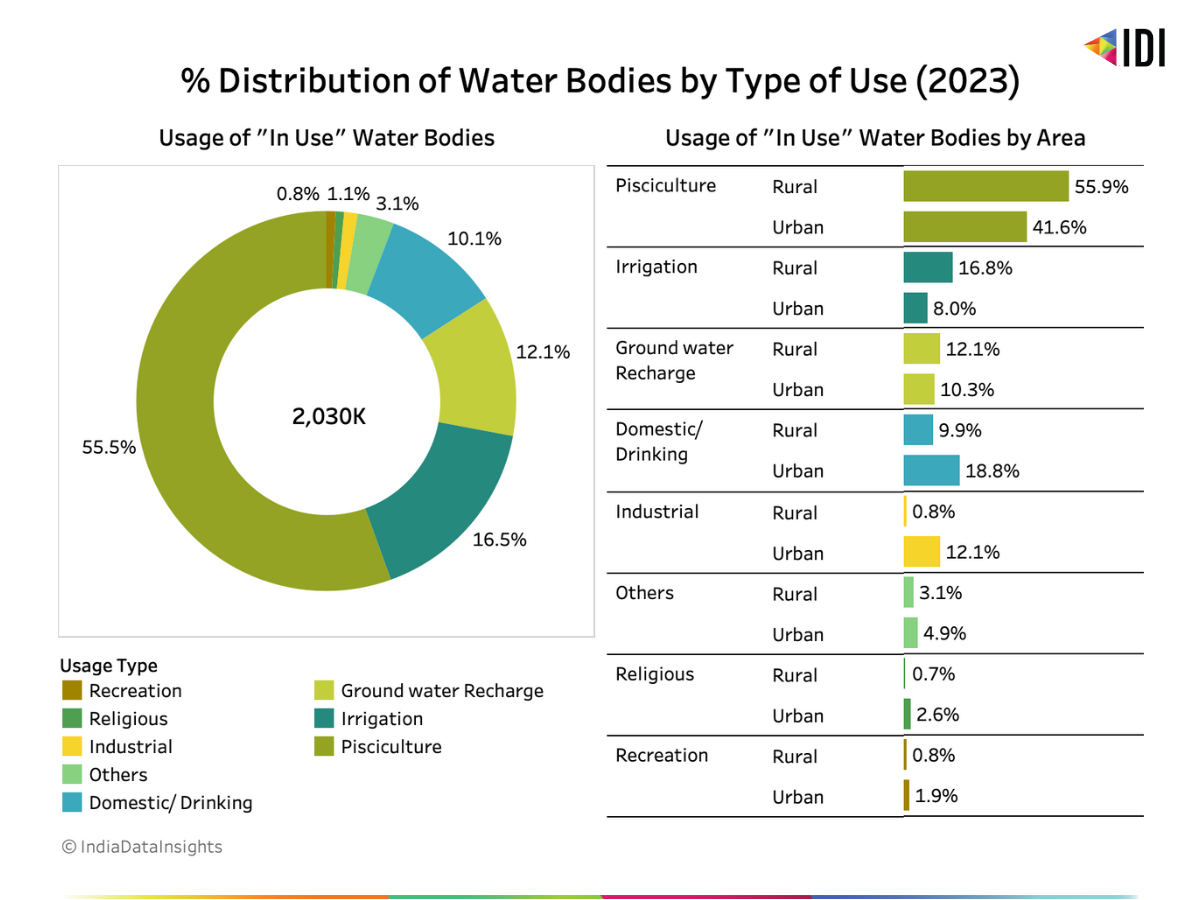
Out of the total water bodies, 84% are utilised primarily across the top three uses—55.5 % for pisciculture (1126K), 16.5% for irrigation (335K), and 12.1% for groundwater recharge (244K). These applications are predominantly observed in rural areas. Conversely, in urban locales, water bodies find utility in activities such as domestic drinking, industrial use, religious ceremonies, recreational purposes, and other miscellaneous purposes.
Another important natural freshwater resource in India is the groundwater. This complements surface water availability; However, excessive use of groundwater can lead to its depletion.
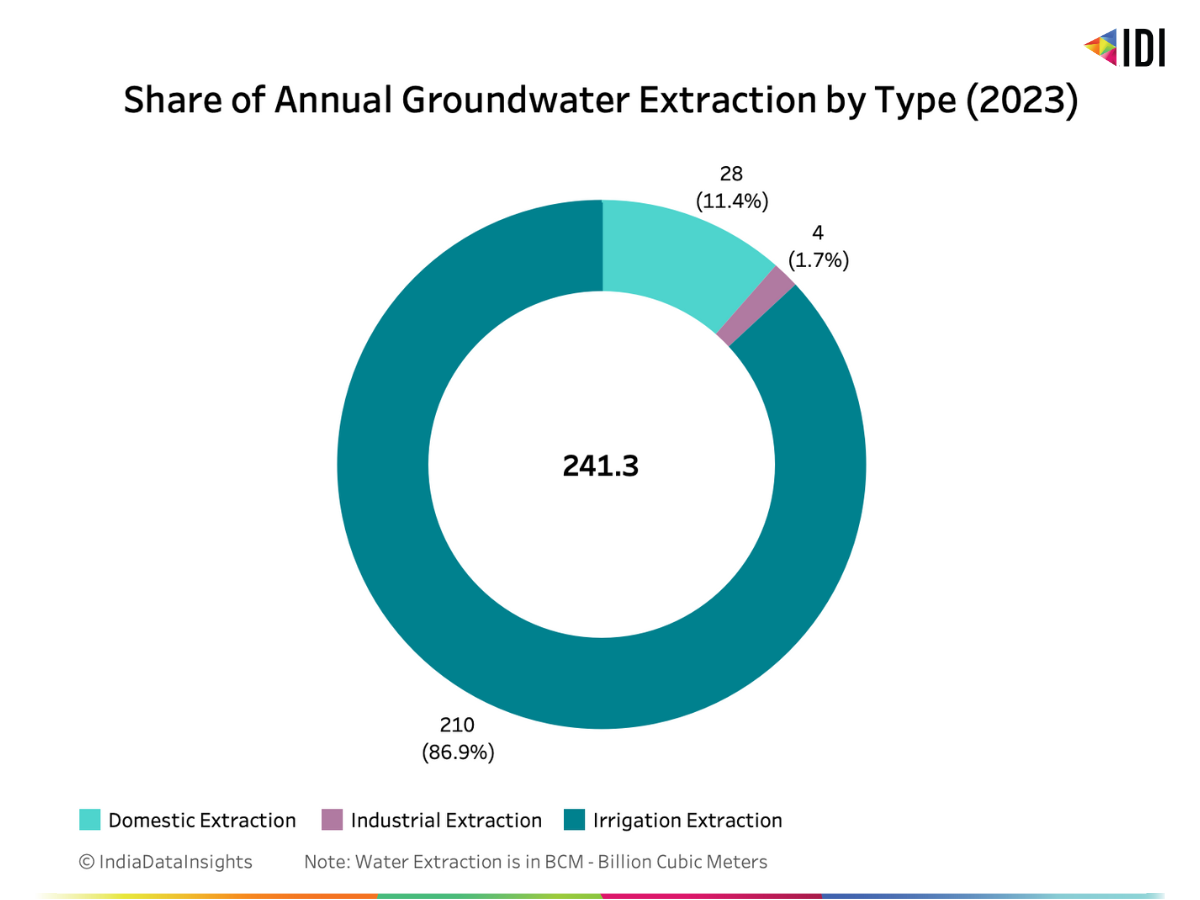
In 2023, the total groundwater extraction amounted to approximately 241 billion cubic meters (BCM), with a share of ~60% of GW extracted. An overwhelming majority, nearly 87% (210 BCM), of this extracted water is utilized for irrigation purposes, approximately 11% is allocated for domestic use, and the remaining 2% is utilized for industrial purposes. Over the last two decades, the water extracted for irrigation has decreased by 1.3%, and extraction for domestic purposes has increased by 52.4%.
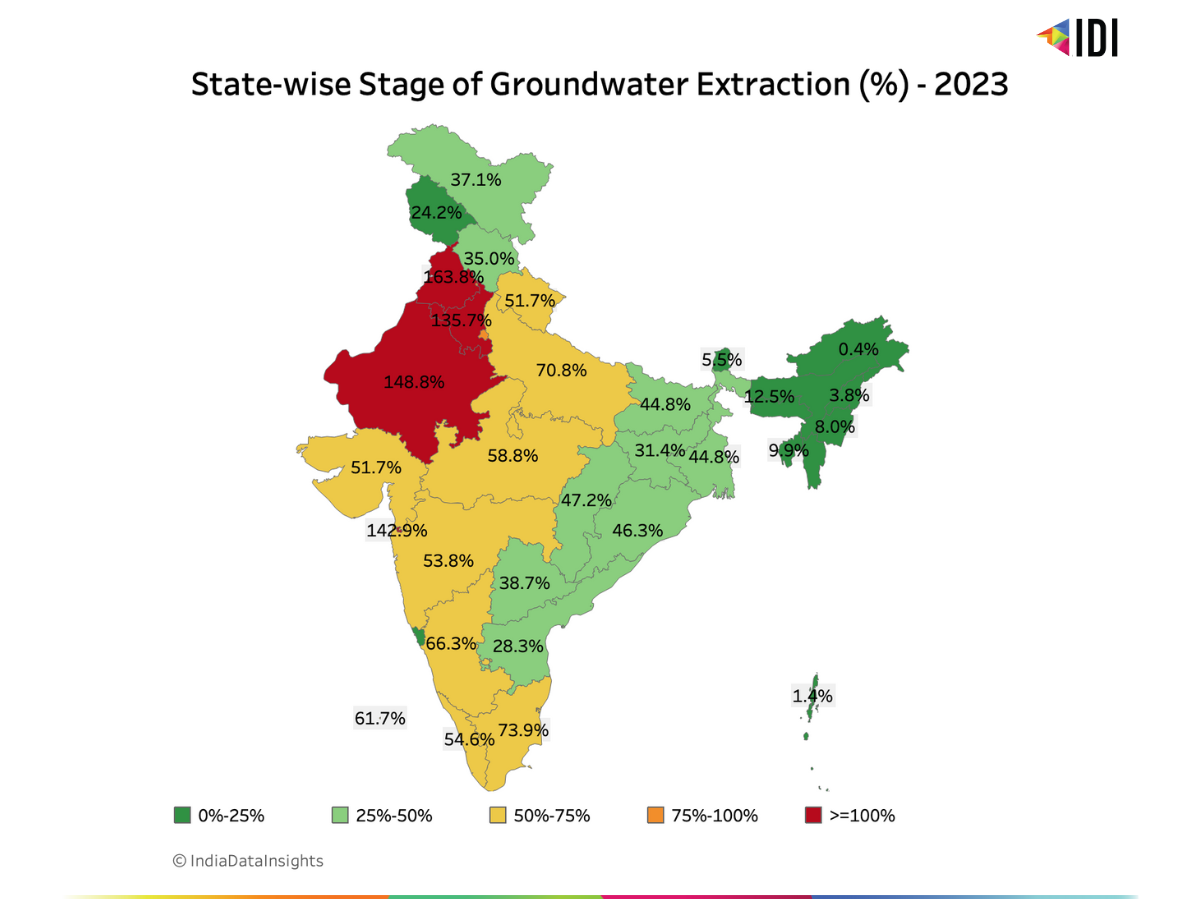
In 2023, northern states such as Rajasthan, Haryana, and Punjab have exhibited significant overexploitation of their groundwater resources. Conversely, the central belt appears to be engaged in a more moderate level of groundwater extraction, while the eastern belt demonstrates less than 50% activity in groundwater extraction. Groundwater extraction is the least in the northeastern states.
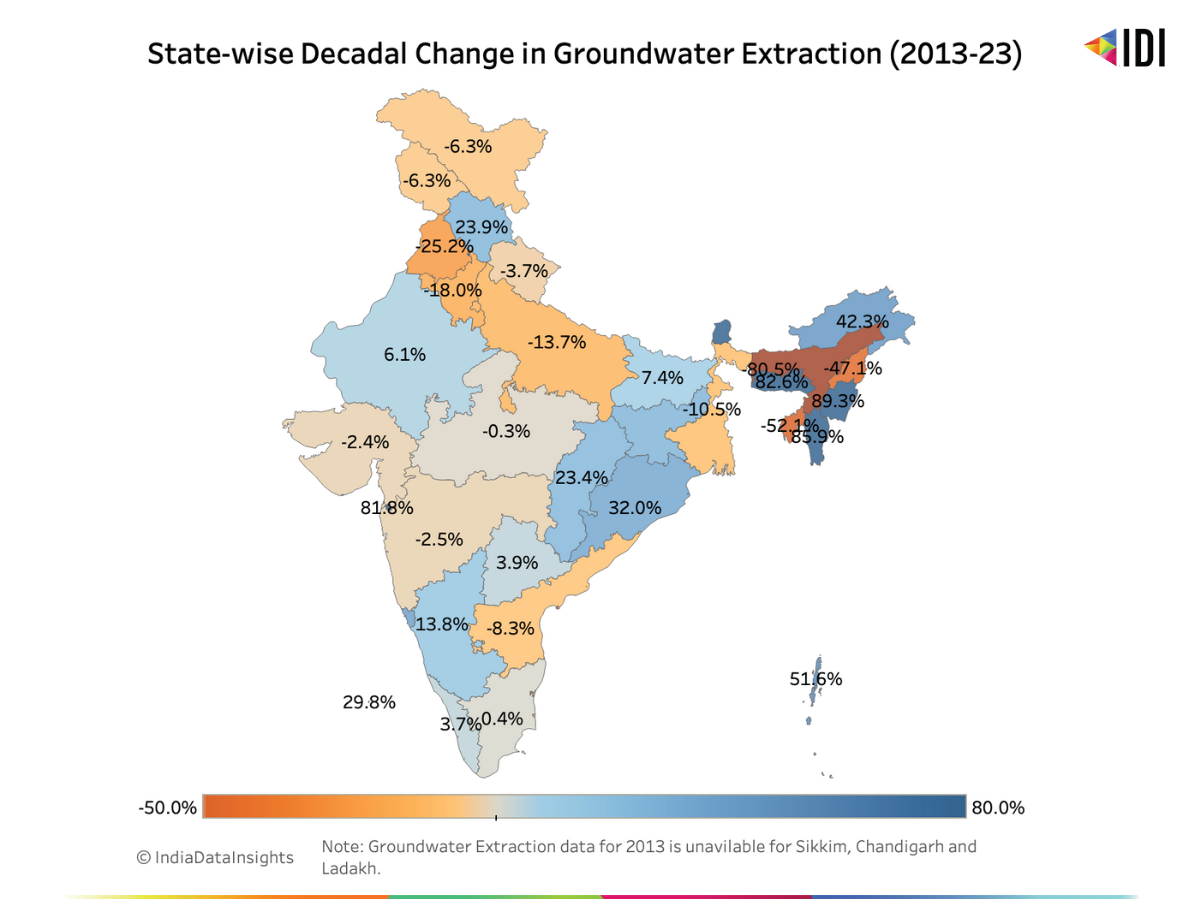
Annual groundwater extraction has decreased by 4.6%, over the last decade. The highest extraction was observed in Manipur, increasing by 89.2%, while Assam decreased its extraction by 80.5%. Extraction of groundwater in Rajasthan has risen by 6%, maintaining its position as the most exploited state for groundwater resources over the past decade.
Maintaining stable groundwater levels is imperative, with more than 80% of India’s groundwater used for irrigation.
In 2023, India's groundwater recharge was about 449 billion cubic meters (BCM), with rainfall-induced recharge being the primary source. Nearly two-thirds (60.3%) of the groundwater recharge is attributed to rainfall, while the remaining portion (39.7%) stems from other sources.
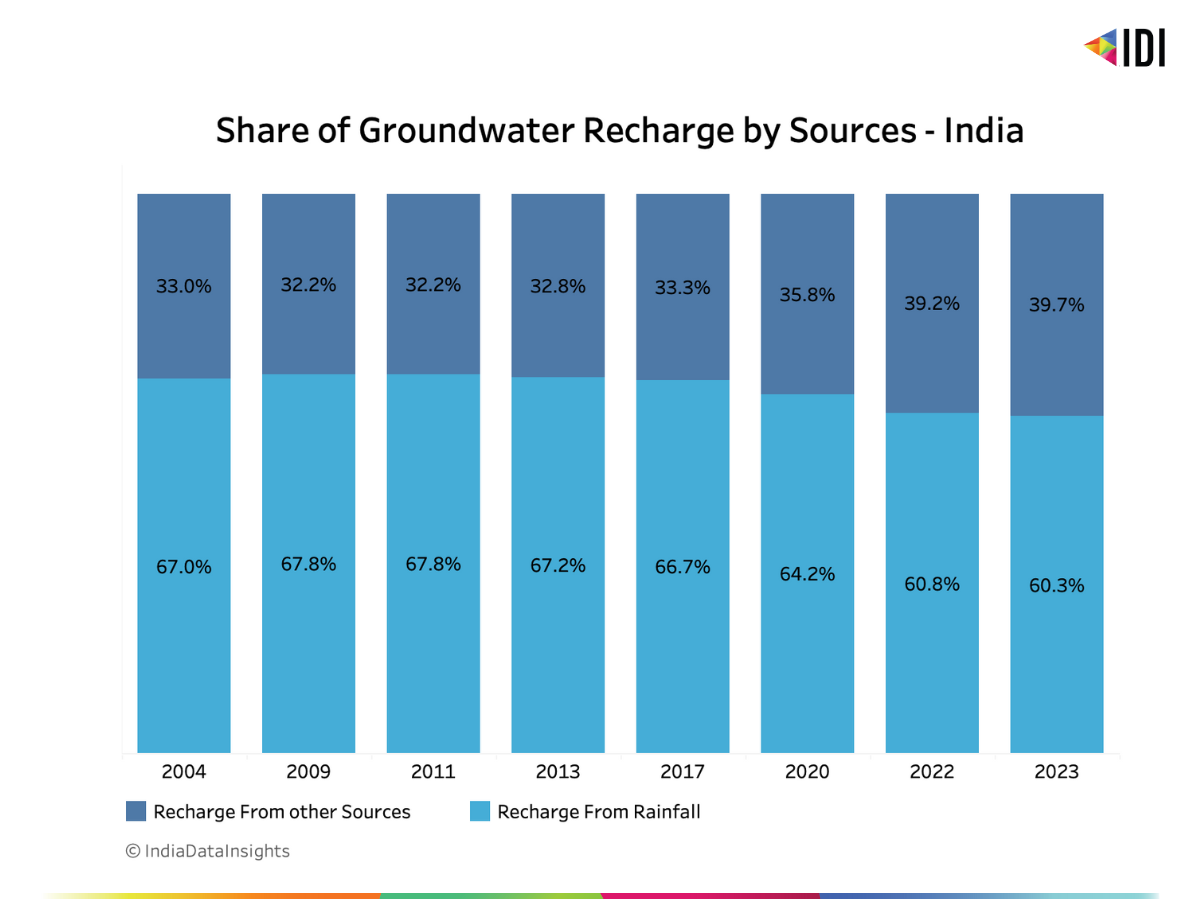
Over the past decade, groundwater recharge from rainfall has consistently declined, while recharge from alternative sources has shown an upward trend.
The annual groundwater recharge from rainfall has decreased by 19 BCM (approximately 6.5%) over the last two decades.In contrast, recharge from other sources has experienced a significant increase of 35 BCM (around 24%) during the same period.
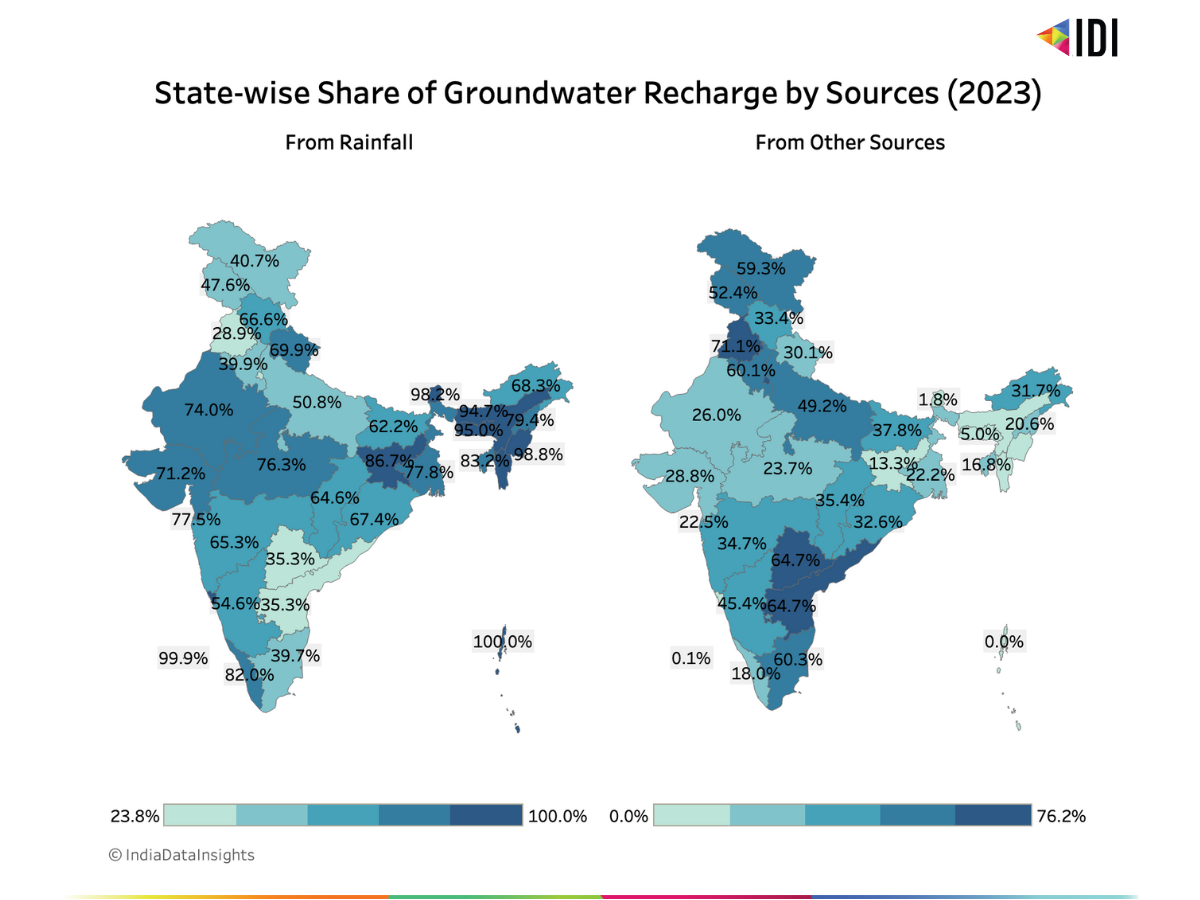
Rainfall drove groundwater recharge in certain northeastern states, including Jharkhand and Kerala, in 2023. Conversely, significant groundwater recharge from other sources was observed in states and Union Territories such as Chandigarh, Punjab, Delhi, Andhra Pradesh, and Telangana.
Both surface water and groundwater sources are integrated into piped water supply systems through extensive networks of pipelines and distribution infrastructure.
They are closely interconnected components of effective water resource management, with each playing a vital role in providing reliable and safe water supplies for various uses.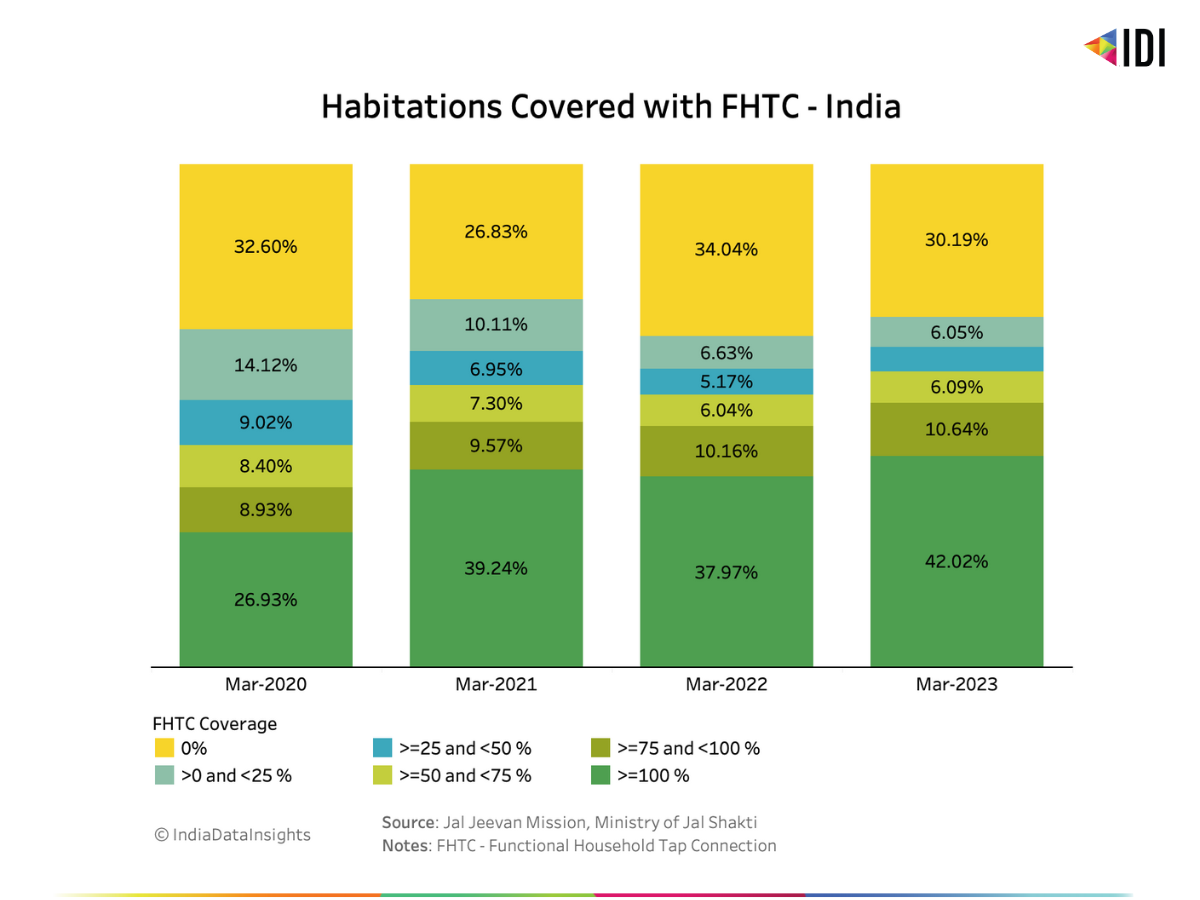
Over the past four years, there has been a 60% increase in India's piped water supply (PWS) coverage. As of March 2023, out of the 16.96 lakh habitations in India, 96.33% (~ 16.3 lakhs) are now encompassed within the rural piped water supply network.
As of March 2023, ~42% of habitations have achieved full coverage with functional household tap connections (FHTCs). However, 30% of habitations still await FHTC implementation.
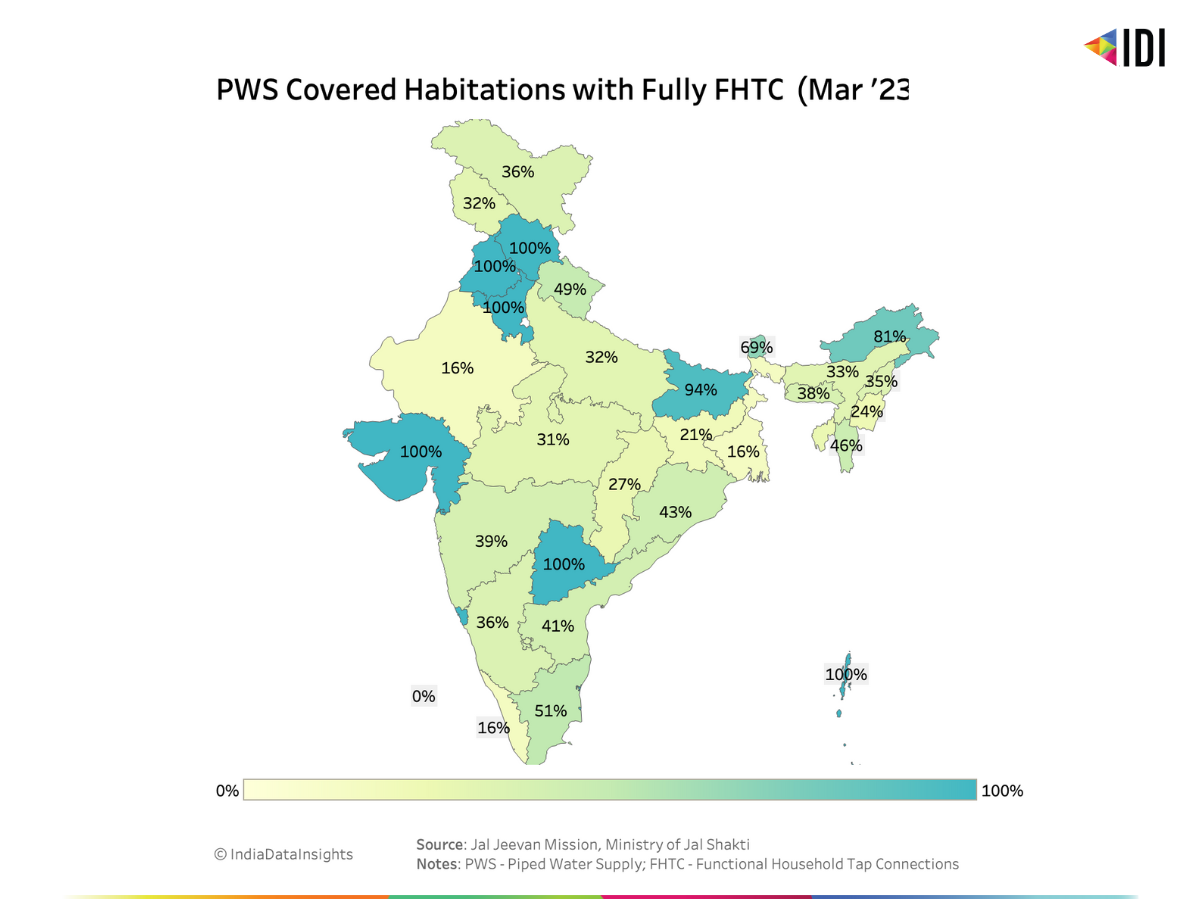
100% of the habitats in Himachal Pradesh, Punjab, Haryana, Gujarat, and Telangana are covered by fully functional household tap connections (FHTCs). Conversely, only 16% of habitations have achieved full FHTC coverage in Kerala, Rajasthan, and West Bengal.
As rural piped water supply advances at a rapid pace, the pressing issues of groundwater overexploitation, diminished recharge from rainfall due to climate change, burgeoning population, and other factors continue to contribute to a steady decline in per capita water availability. This emphasizes the urgent necessity for the adoption of effective water management practices.
Looking ahead, it becomes imperative to observe the actions taken to address water utilization, facilitate groundwater recharge, and mitigate pollution of our existing water reservoirs. Given the escalating water stress and depletion of groundwater reserves across various regions, prioritizing effective management and bolstering groundwater recharge becomes indispensable for fostering sustainable water management and socio-economic progress in India.
For more details refer to our report on 'The State of Water Resources in India' or explore our data assets on SDG 6.
